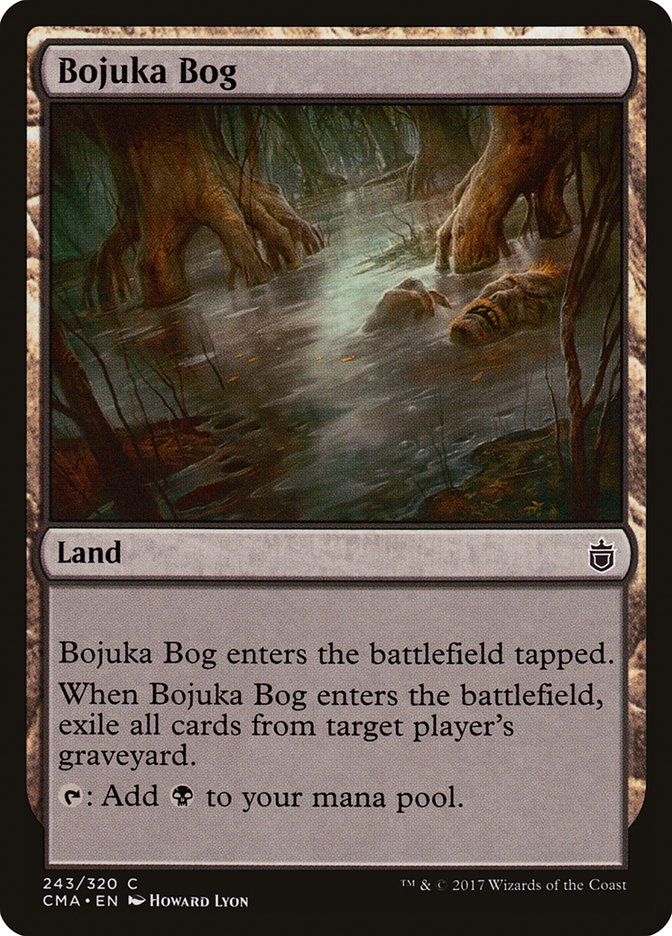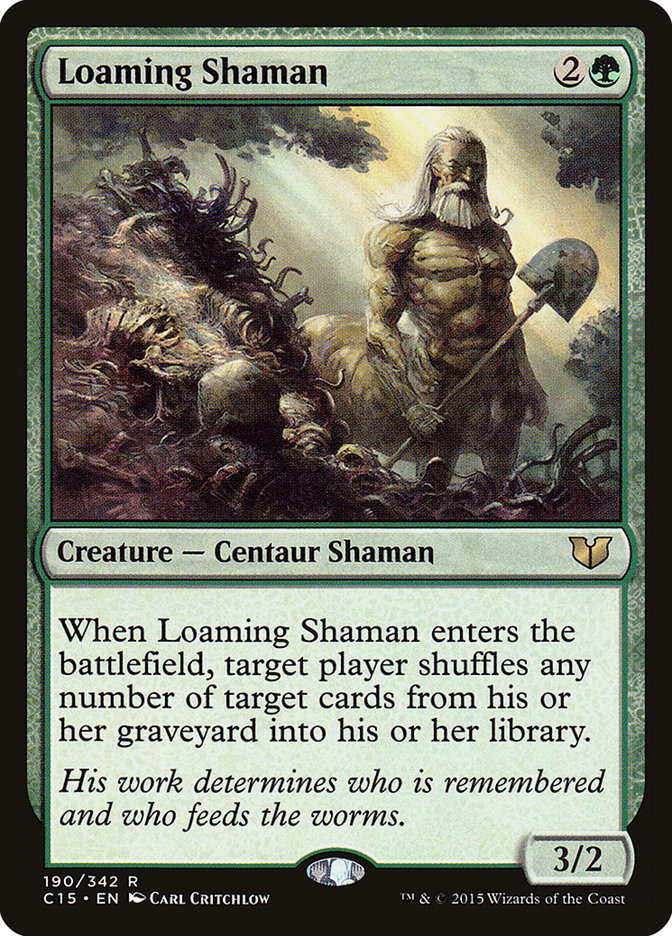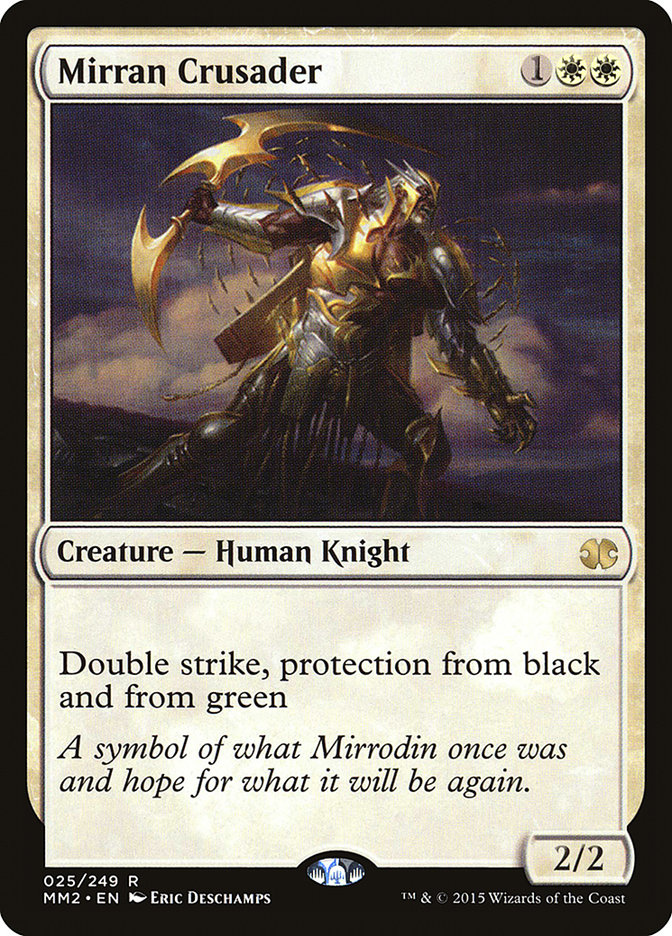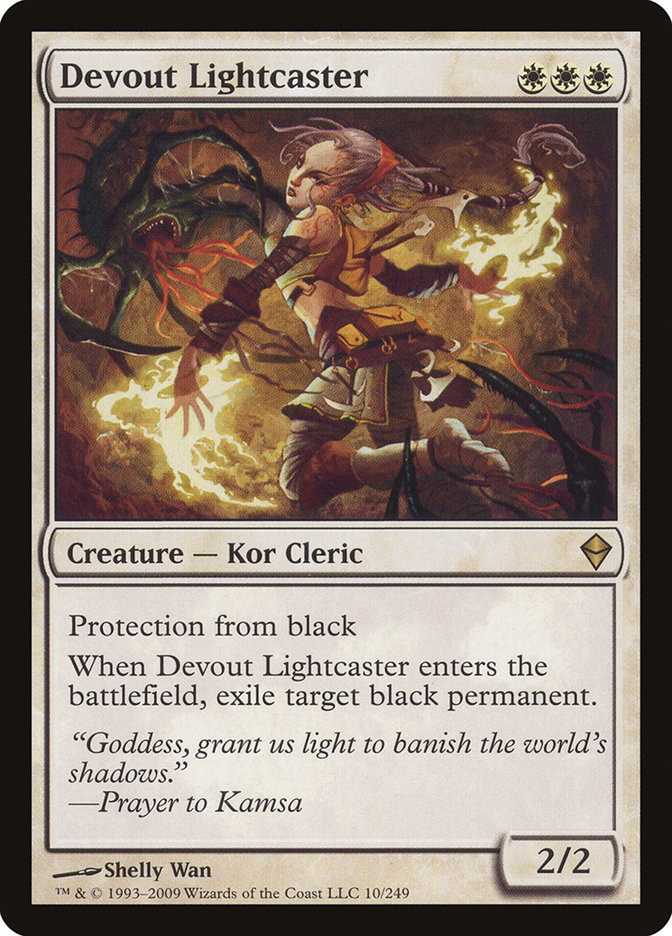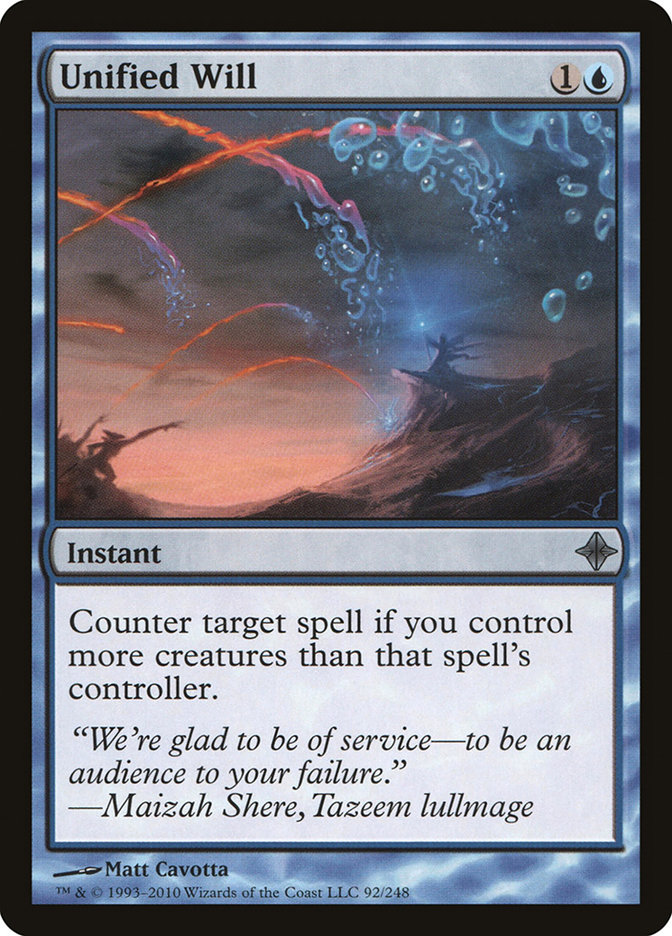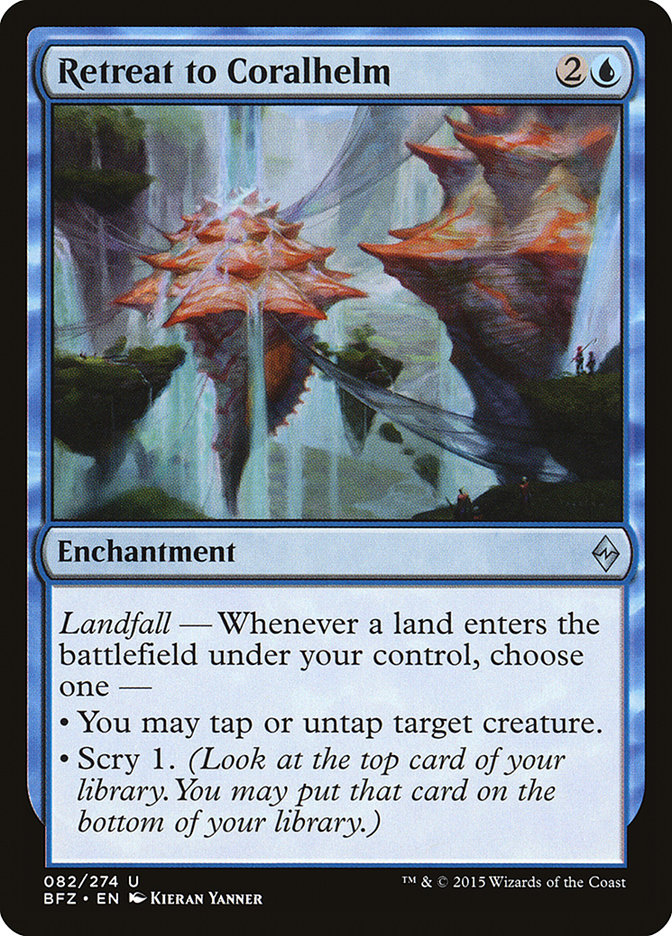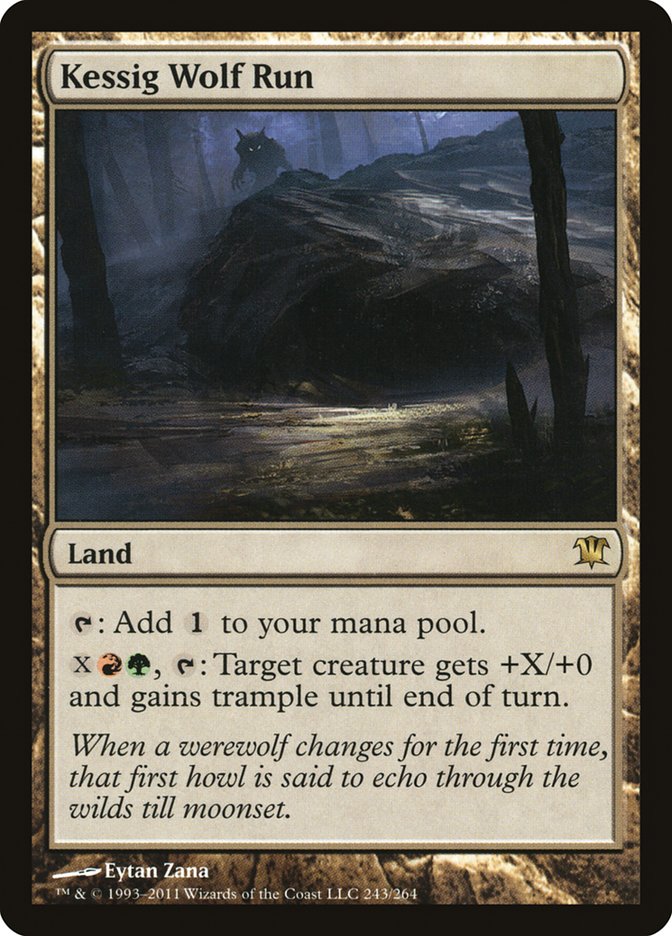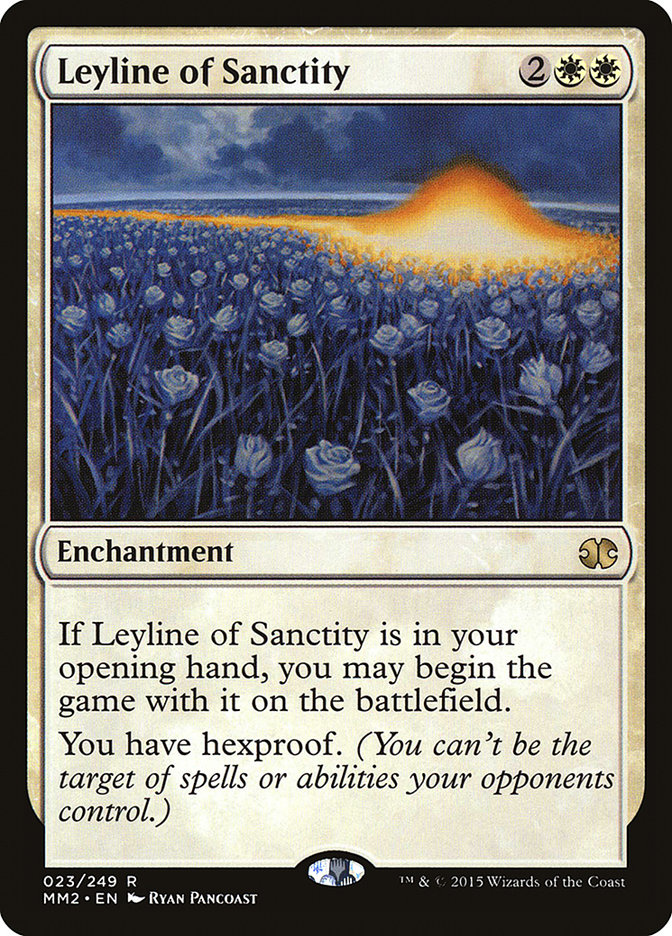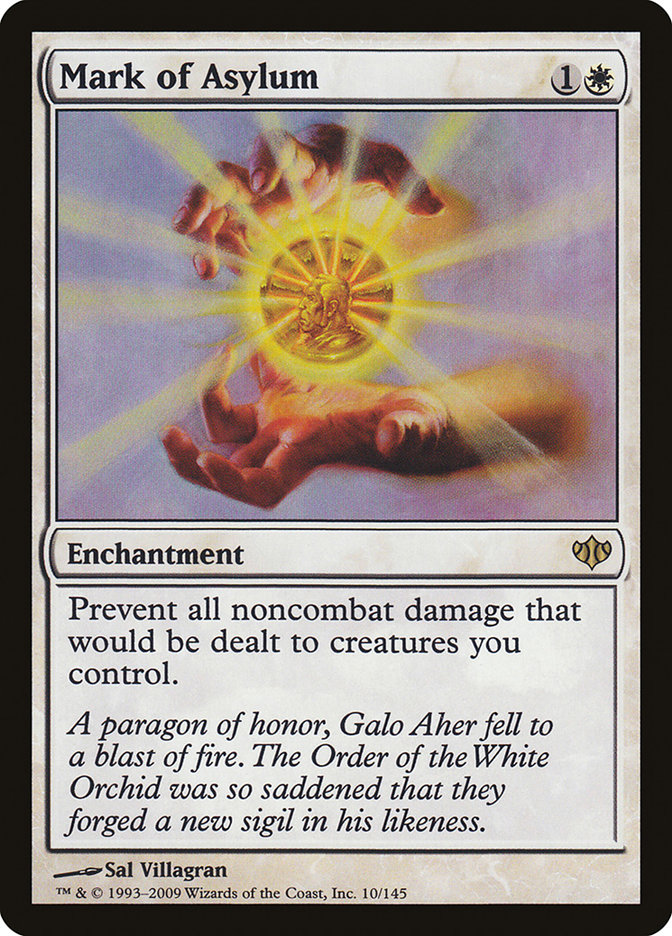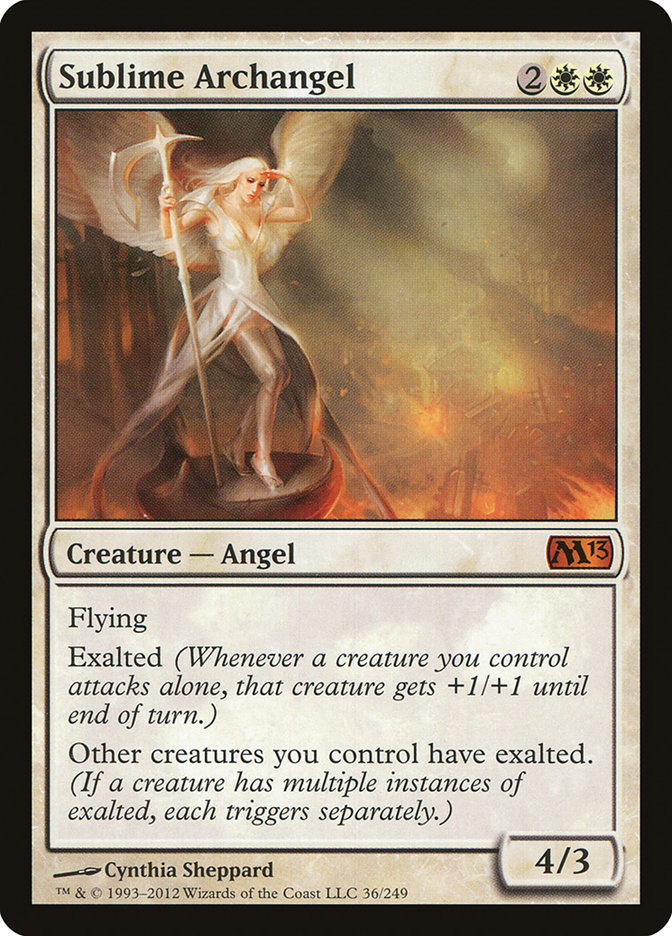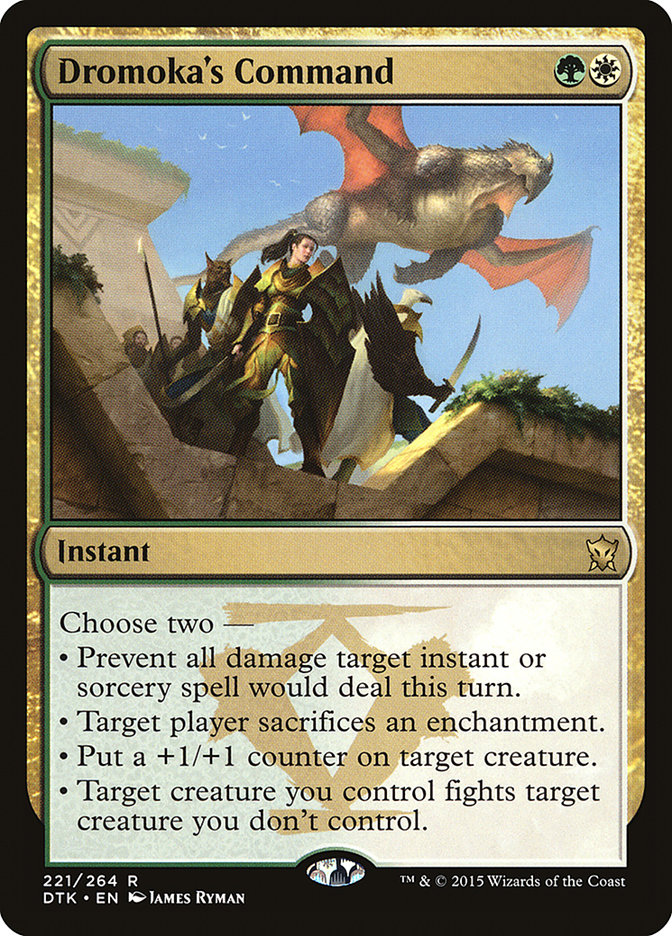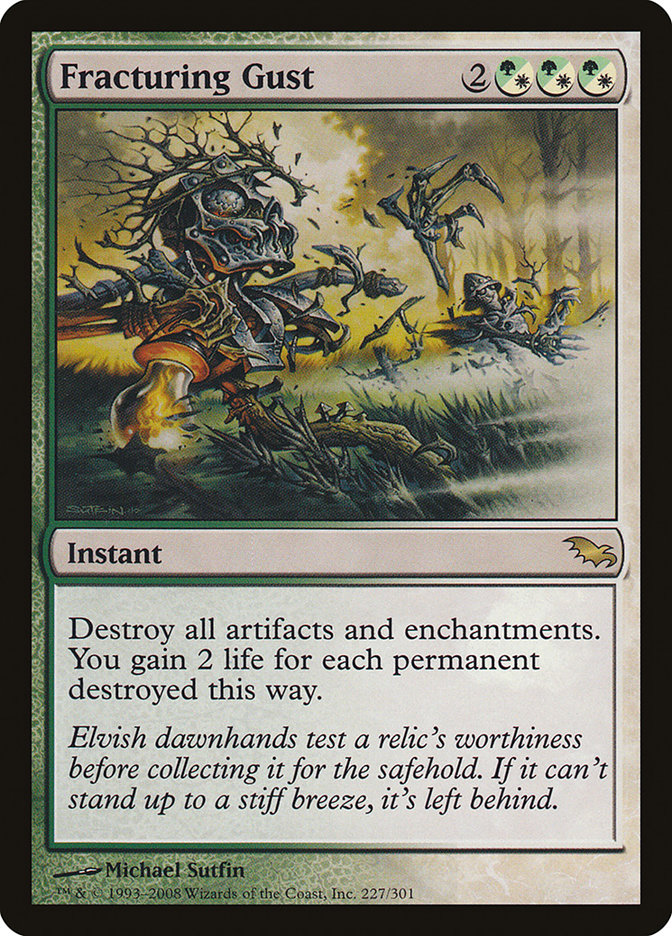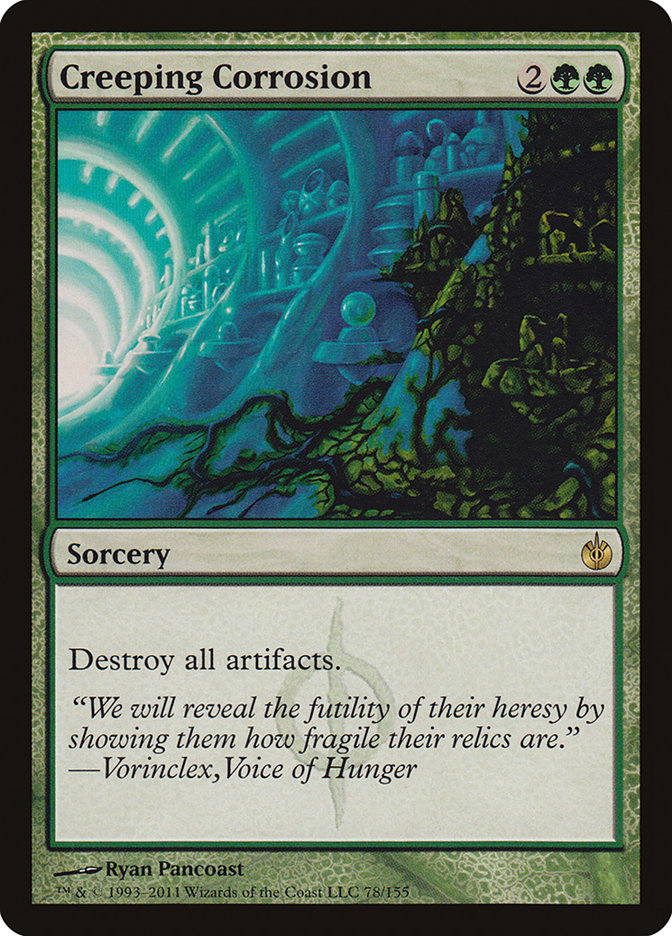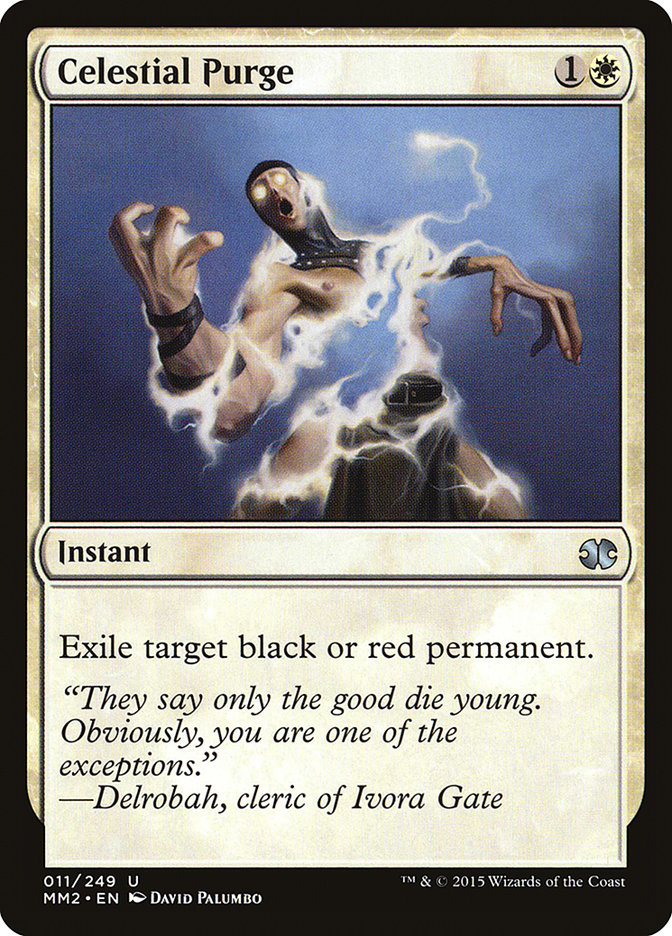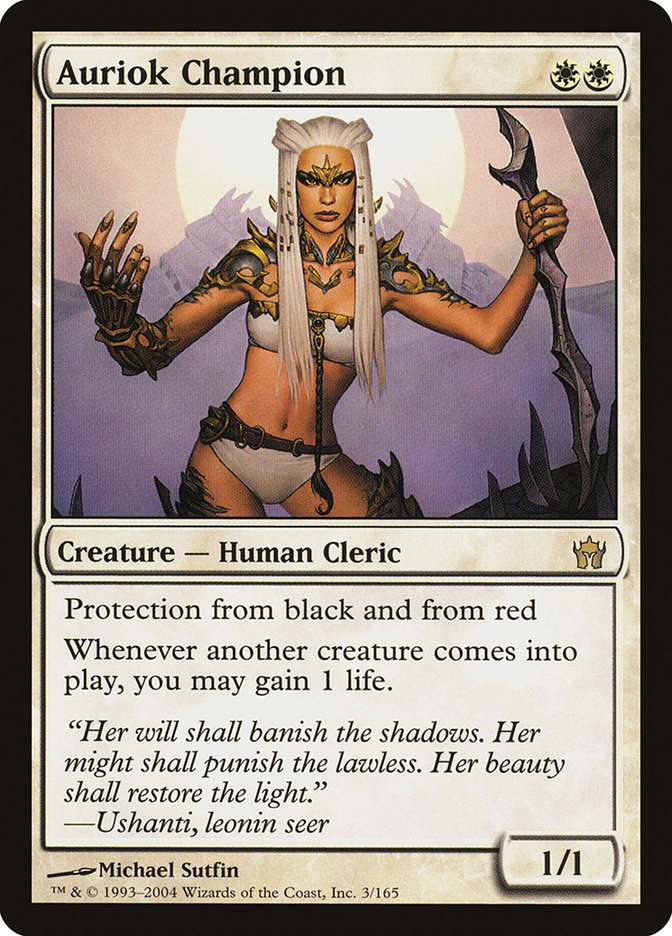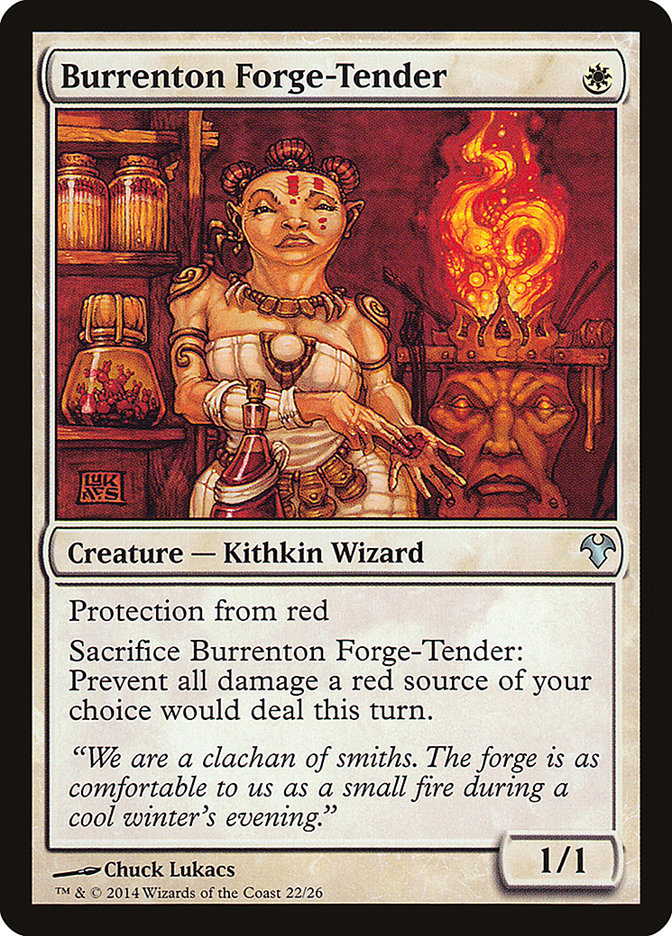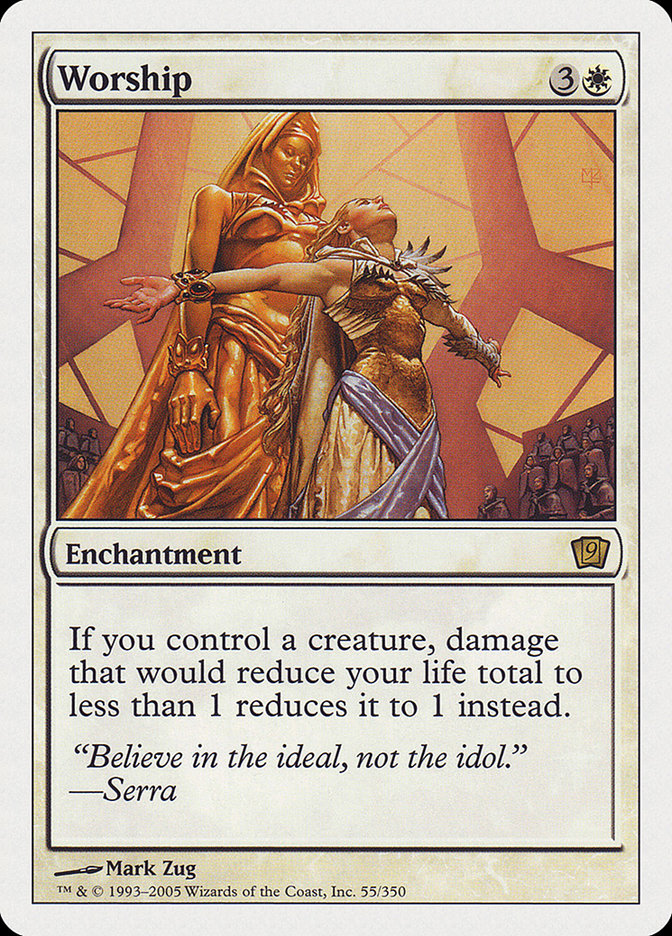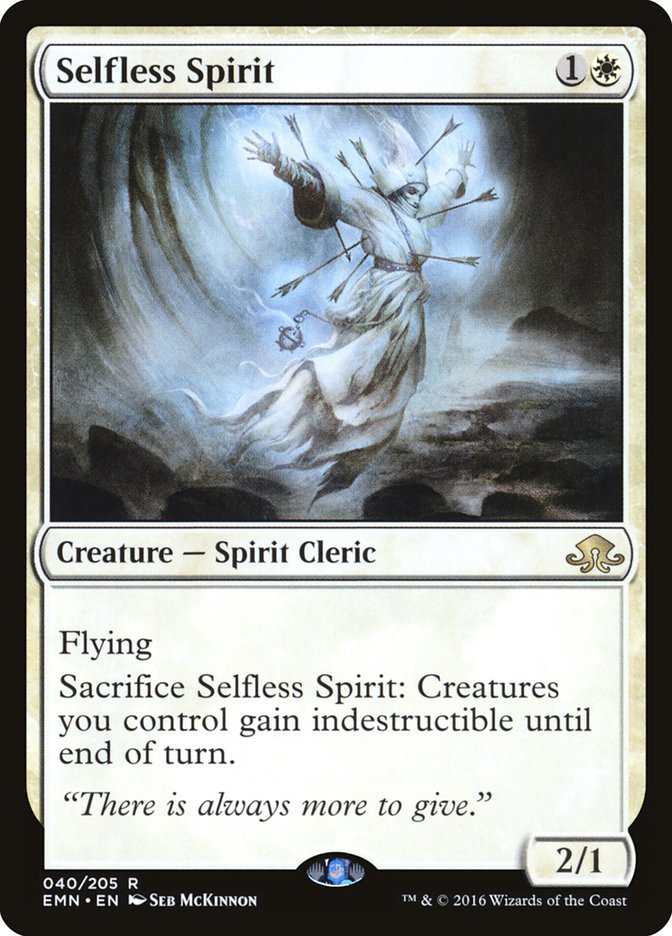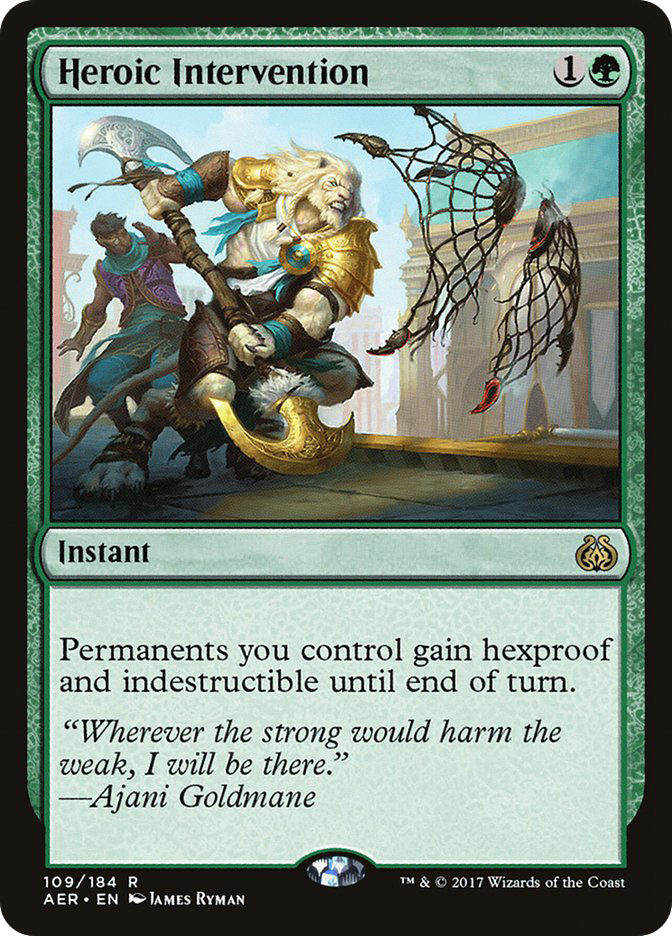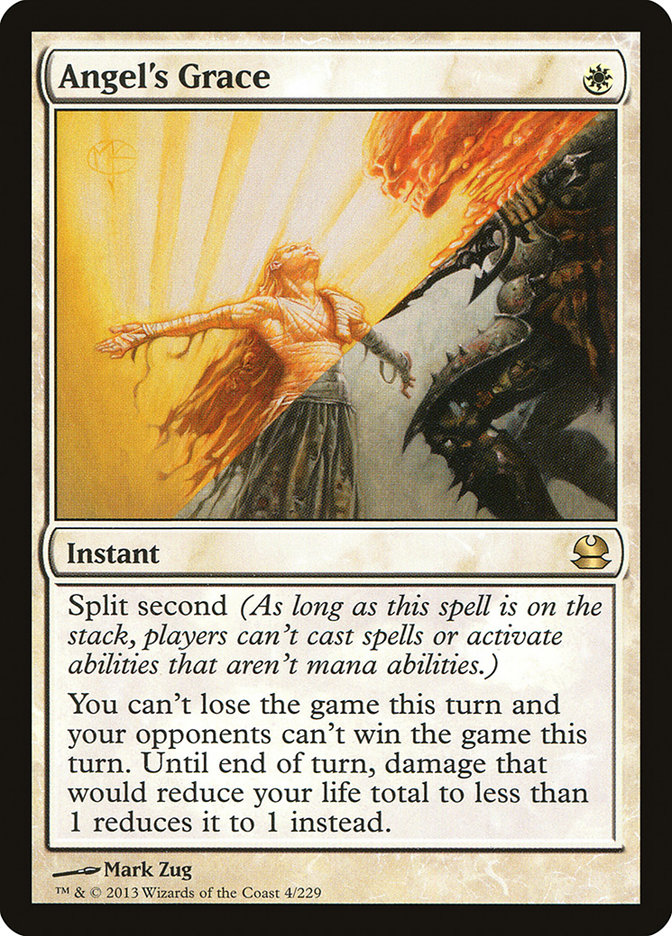My original plan this week for my article was to build Standard decks that could beat Ramunap Red after watching it dominate the Pro Tour. I’m a fan of green midrange decks, and felt that I could design some decks to keep you alive during this aggressive time in Standard. However, I realized that this will be the most common type of article this week throughout the internet, and there will be no shortage of anti-Ramunap Red technology. We even saw that the Magic Online Pro Tour Qualifier on Saturday had zero Ramunap Red decks in the Top 8, instead being filled with different Kalitas, Traitor of Ghet decks.
So the Standard metagame looks to be extremely healthy and starting in a normal ebb and flow between aggro, midrange, and control, and therefore I’m going to leave Standard alone this week. Plus, Conley Woods had a nice article yesterday on how to crush Ramunap Red. With the SCG Tour heading to Syracuse and Richmond the next two weekends for my favorite format, Modern, that’s what I’m going to be focusing on.
And what better thing to write than a complete guide to the most fun deck in Modern, G/W Company! I’ve had a few dozen people ask for a guide to the deck I won SCG Atlanta with, so I’m going to go over sideboarding against some of the most popular archetypes in Modern, as well as in-depth coverage of other sideboard options available for you to use to customize G/W Company to beat your local metagame. For reference, here’s my #SCGATL-winning decklist:
Creatures (29)
- 2 Azusa, Lost but Seeking
- 3 Birds of Paradise
- 1 Eternal Witness
- 2 Kitchen Finks
- 4 Noble Hierarch
- 4 Knight of the Reliquary
- 2 Scavenging Ooze
- 4 Voice of Resurgence
- 4 Courser of Kruphix
- 1 Tireless Tracker
- 2 Ramunap Excavator
Lands (23)
Spells (8)

In my last article I mentioned that I was happy with my 75 and I wouldn’t change anything from it, but the metagame is always changing some and it’s important to stay on top of it. As I write this, I haven’t decided whether to play G/W Company or Eldrazi Tron at #SCGNY this weekend, but if I do play G/W, I’m most likely playing this same decklist again, so I’m going to continue to use this same list as a guide for sideboarding, and afterwards I’ll touch on more sideboard options that you can use. With that said, let’s get on to the matchups!
Affinity
In:
Out:
This is the matchup you sideboard the most for, and for good reason. Game 1 is extremely hard to win against Affinity; you basically need their deck to fail, which is possible. I don’t think I’ve ever beaten a Cranial Plating in Game 1, and Arcbound Ravager and Steel Overseer are similarly difficult to race. However, the matchup post-sideboard is very favorable, which makes the overall matchup quite close. Many of the cards I’m bringing in are for obvious reasons, so let’s talk about a couple of the non-obvious cards.
Both Aven Mindcensor and Sigarda, Host of Herons enter as flying blockers, with the former being able to surprise block a Signal Pest or be a hit off Collected Company. Whisperwood Elemental’s role in the matchup is to create colorless creatures that can block Etched Champion. Coming out of the deck are twelve ground creatures that don’t do very much in combat, which puts a huge hit into our available Collected Company targets, but the ones we still have in our deck are so important that I’m not willing to trim any number of Collected Company. In fact, I don’t think it’s correct to ever take a Collected Company out of your deck for any reason in any matchup.
Grixis Death’s Shadow
In:
Out:
A much easier deck to sideboard against than Affinity. I’ve built the maindeck of G/W Company to be able to beat Grixis Death’s Shadow by having the full playset of Voice of Resurgence as well as multiple Kitchen Finks. Azusa, Lost but Seeking doesn’t do anything in combat and isn’t a necessity for this matchup, and it’s the first card out in midrange attrition battles. After that, for the third card out, I usually take out Tireless Tracker because it’s also small for combat and it’s hard to have time to crack the clues, but I don’t mind shaving a Ramunap Excavator or a Birds of Paradise either.
The reason why I don’t shave a Birds of Paradise personally is because I’m bringing in two five-drops from the sideboard. Whisperwood Elemental is a pretty obvious inclusion, but Sigarda, Host of Herons is actually a really tough card for Grixis Death’s Shadow to deal with and usually ends the game in one or two turns because of their low life total and inability to block flyers.
TitanShift
In:
Out:
This is your absolute worst matchup and you would need to add in a lot of different sideboard cards to make it good. The best tool I have in my 75 is Aven Mindcensor to try to keep them from finding Valakut, the Molten Pinnacle, but it’s not enough. If Valakut decks are popular in your area, I would recommend playing two Aven Mindcensors maindeck instead of the two Kitchen Finks. I also bring in the Surgical Extractions to try to get lucky with an opponent playing an early Valakut and me being able to Ghost Quarter it and then exile all copies of my least favorite card in Modern. Try to get your Azusa / Ramunap / Ghost Quarter combo going as fast as possible here, most likely attacking their green sources to keep them off casting spells, but taking Mountains from their deck may also be successful.
Eldrazi Tron
In:
Out:
Similar sideboarding plan to Affinity here, even though the individual cards do different things. The creatures coming out of our deck aren’t that bad, per se, but the cards we’re bringing in are much better. Sigarda, Host of Herons shines, as it’s our only way of beating All Is Dust. If you have a lot of Eldrazi Tron players around you, then play another Sigarda in your sideboard.
Other than All Is Dust, Walking Ballista and Basilisk Collar are a huge problem, thus all of the artifact hate that comes in. Linvala, Keeper of Silence does a great job of shutting down both Walking Ballista and Endbringer, and the third Ramunap Excavator comes in to help attack their manabase, which is our main plan in the matchup.
U/R Gifts Storm
In:
Out:
Another pretty poor matchup for us. Our main concern is getting pinged to death by Grapeshot. U/R Gifts Storm’s other win condition, Empty the Warrens, is a little easier to manage with our ground creatures and Engineered Explosives after sideboarding. Aven Mindcensor is a vital card in the matchup because it basically shuts down Gifts Ungiven unless you’re extremely unlucky. Your best sideboard card is of course Surgical Extraction though, and Grapeshot and Past in Flames are the most common targets. The more popular this deck becomes, the more Surgical Extractions you will want in your sideboard.
Burn
In:
Out:
This matchup is not nearly as good as many people believe it is and the games are usually close. Sure. if you have multiple copies of Courser of Kruphix or Kitchen Finks, you will probably win, but if you don’t have those cards, you’ll probably lose. Not only is Searing Blaze a tough card to beat, but many opponents bring in Destructive Revelry from their sideboard to take out Courser of Kruphix as well. I like upgrading a couple of my creatures to ones that can destroy Eidolon of the Great Revel, and if you happen to see Wild Nacatl or Grim Lavamancer from their side, you can think about bringing in an Engineered Explosives, although I’m not much of a fan of that plan.
Elves
In:
Out:
Elves is another very tough matchup to win and the real key is Linvala, Keeper of Silence to shut down Ezuri, Renegade Leader. Even with that, Elves can still go very wide and pretty tall with multiple Elvish Archdruids, so I like keeping in most of my Voice of Resurgences to not only block with but also keep them from casting Chord of Calling or Collected Company on my turn. Aven Mindcensor comes in against any Chord of Calling deck. I sideboard similarly against Counters Company, except if they have multiple Eternal Witnesses, I may bring in Surgical Extraction to take a key piece from their graveyard, but most likely not because of Scavenging Ooze.
G/X Tron
In:
Out:
This is probably a pretty easy matchup to sideboard against, but it’s still a good slice of the metagame and I want to touch on a few things. This matchup is all about Ghost Quarter, and if your opening hand doesn’t have one or a Knight of the Reliquary to find one, you should most likely mulligan. If you execute the gameplan of keeping them off Tron, their most likely way to disrupt you is from Oblivion Stone. Because of this, I like having Kataki, War’s Wage in my deck to slightly tax their mana, and it can even slow them down from cracking their Expedition Maps. Overall, this is a favorable matchup that I like playing against because it’s a simple battle over their manabase.
Dredge
In:
Out:
Playing against Dredge is basically like playing against Affinity; you can lose completely lopsided games where it feels like G/W Company can’t possibly compete, or you can win a close game where you grind out your opponent. I only had two Surgical Extractions in my list for SCG Atlanta because I didn’t expect to face many Dredge decks, but if Dredge is popular in your local area or if it starts becoming a bigger part of the metagame, you will need more graveyard hate.
As is, the biggest problem when playing against Dredge isn’t the flurry of creatures they can sometimes present you with, it’s Conflagrate, which should be your number one target for Surgical Extraction. Both Whisperwood Elemental and Linvala, Keeper of Silence come in as good blockers against Prized Amalgam and crew, but I don’t like bringing in Sigarda, Host of Herons as well because I don’t want a second five-drop in the matchup.
U/W Control
In:
Out:
Even though G/W Company is built to out-grind other decks and has plenty of card advantage inside, U/W Control is honestly a bad matchup. Supreme Verdict is good against the deck, and even though you can beat the first or the second one, the third and fourth Supreme Verdicts make the matchup rough, and G/W Company isn’t fast enough to prevent the Supreme Verdicts from coming down.
Elspeth, Sun’s Champion is another card that’s almost impossible to beat, thus the Engineered Explosives coming in from the sideboard to either clean up the tokens or to destroy problematic enchantments such as Rest in Peace and Detention Sphere. Rest in Peace in particular is a must-answer card, therefore all of the enchantment removal comes in. Path to Exile is the first card out, even though many players are running Gideon of the Trials these days, because if they are activating it as a creature, your life already isn’t good, and you have access to plenty of Ghost Quarters to keep Celestial Colonnade in check.
Abzan/Jund
In:
Out:
Both of these matchups are very favorable, and I’m sad to see them almost disappear from the metagame in recent weeks. Against Jund, you want Engineered Explosives for two because it destroys basically all of their threats, and against Abzan, you can destroy all of their Lingering Souls tokens if they become too problematic. Sometimes, against either deck, you may need to use Engineered Explosives to destroy either Liliana of the Veil or Liliana, the Last Hope because G/W Company isn’t good at pressuring planeswalkers. Even though Kitchen Finks is a perfectly fine card in these matchups, we have upgrades in the sideboard that can make them even better. Feel free to trim a Birds of Paradise in this matchup instead of a Kitchen Finks, especially if you’re on the draw. Watch out for Damnation coming in from their sideboards and try not to overextend too much.
Other Sideboard Options
Here’s a quick list of some other options you can possibly use for your sideboard as well!
I’m not a big fan of Bojuka Bog in the deck myself, but many other people are higher on it than I am. If graveyard decks become a big problem, Bojuka Bog is a nice tutor target for Knight of the Reliquary. You can even Ghost Quarter it and bring it back with Ramunap Excavator over and over again! Loaming Shaman is pretty cute, but I can’t imagine it’s good enough.
If you really, really, really want to beat Death’s Shadow, you have some good options. Even though it’s much harder to cast, Devout Lightcaster would be my preferred card out of these two because of its ability to exile Liliana, the Last Hope, which is responsible for most of my losses to Grixis Death’s Shadow.
If combo decks have you down, you can venture into a very slight blue splash quite easily for some needed power. You can turn a basic Forest into a Breeding Pool and use both Noble Hierarch and Birds of Paradise to help fuel these nice sideboard options. Unified Will is a wonderful counterspell that stops both Scapeshift and Primeval Titan in their tracks, and Retreat to Coralhelm is a quick combo kill with Knight of the Reliquary.
Alternatively, you could have a similarly small red splash to be able to support Kessig Wolf Run to trample over blockers. With red in the deck, you’d have access to Blood Moon, which honestly hurts our own deck quite a bit but shuts down Valakut, the Molten Pinnacle. I wouldn’t recommend bringing it in against any deck except Valakut decks and Amulet Titan, but if you really want to beat Valakut, it’s an option.
More options to fight Valakut, the Molten Pinnacle. (You may be seeing a trend here: I don’t like that card!) These two cards work best together. Unfortunately, Leyline of Sanctity isn’t enough to stop Valakut because it can still kill all of your creatures, which is why the Mark of Asylum is necessary. I think this is too deep, but hey, I’m letting you know the options.
If you want to have a faster clock against some decks, these are two of the best cards to speed your deck up without reaching into different colors.
Dromoka’s Command is an extremely versatile card for only two mana, making it one I’m a big fan of. If there are more Anger of the Gods, Rest in Peace, or Blood Moon around, I would recommend playing a copy, especially because of the amount of small combo creatures that are important to get of the battlefield these days.
The more Affinity and Lantern decks there are, the closer I am to playing a Fracturing Gust. Right now I’m satisfied with the number of Stony Silence and Kataki, War’s Wage I already have, but there’s nothing wrong with fracturing an Affinity player’s hopes and dreams.
If you really don’t like red or black decks (can’t blame ya), there are some sideboard cards available. Celestial Purge is most useful exiling planeswalkers, while Burrenton Forge-Tender can stop an Anger of the Gods in its tracks. Kor Firewalker and Auriok Champion are most useful against Burn, but the latter can also sit in front of a Death’s Shadow for days.
I’ve personally never really cared for the card, but it has its uses against combo or aggro decks that can’t get rid of your creatures.
If there are simply too many Supreme Verdicts running around, there are options to make your creatures indestructible for a turn. I think I’d rather just use Surgical Extraction after the first Supreme Verdict to make sure there won’t be any more, though.
If you need to beat Ad Nauseam, give ’em a taste of their own medicine!
So there you have it: my guide to sideboarding against the other top decks in Modern with G/W Company. Basically the entire sideboard consists of flex slots, and you can see that all of the cards have various uses in a variety of matchups. However, if your local metagame has a few archetypes you need to be able to beat, or if a certain deck starts to have a larger metagame share than it currently has, feel free to adjust your sideboard numbers accordingly and add in more copies of a card as needed.




